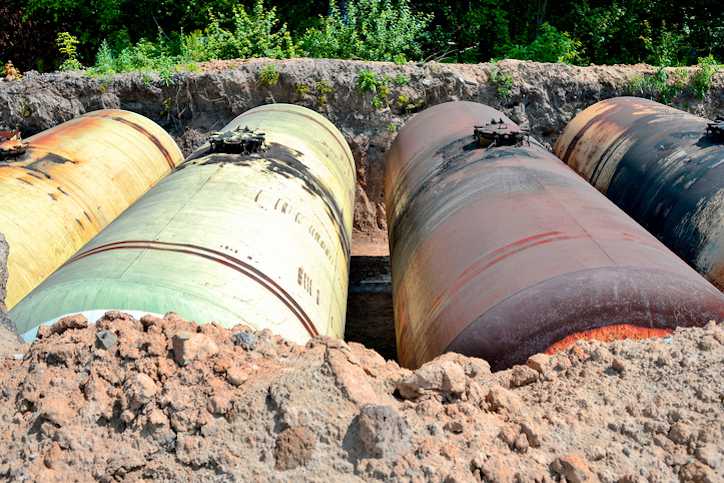Who Needs an Environmental Site Assessment? And Who Doesn’t?
The risk of environmental liability can derail the purchase of commercial real estate. So, a commercial property buyer’s due diligence must include an environmental site assessment (ESA) to weigh the threat of dangerous and expensive pollutant cleanups.
Over the past three decades, CTL Engineering has conducted ESAs that protected clients from liabilities stretching into the millions of dollars. Read on for a quick overview of the facts on ESAs and why they are so important.
Why environmental site assessments (ESA) are essential
ESAs help buyers understand the potential for pollutants and toxins in commercial properties. The U.S. Environmental Protection Agency (EPA) lists more than 1,200 priority pollutants requiring cleanups that can cost hundreds of thousands, if not millions, of dollars.
Buyers also want to avoid litigation if environmental hazards harm people on the property. Moreover, they want to sidestep any costs and reputational damage from potential fines or other enforcement actions from regulators.
Property owners can be liable for toxic hazards even if they did not cause or know about them at the time of purchase. The triple threat of cleanup costs, regulatory action, and civil litigation provides a powerful incentive for buyers to conduct an ESA with a private company such as CTL.
Common toxins that environmental site assessments (ESA) target
These are examples of the kinds of liabilities that might emerge from an ESA:
- Buried or leaking underground storage tanks
- Undocumented landfilling of contaminated soils
- Dumping of hazardous materials, unintentionally or intentionally
- Illegal placement of drums containing hazardous materials
- Soil and groundwater contamination
- Harmful solvents such as trichloroethylene (TCE)
- Significant petroleum waste, such as automotive shops that improperly managed used oil and parts-cleaning wastes
- Significant hydraulic oil impacts, typically created by underground hydraulic lifts at service stations
- Heavy metal impacts, such as improperly managed industrial waste
- Asbestos and mold contamination
ESAs generally follow the American Standard of Testing and Materials (ASTM) E 1527-13, but they are not government regulated.
environmental site assessments (esa) are not reported to regulators automatically
A common misunderstanding among potential ESA clients is the worry that ESA results get reported to a regulator like the EPA. However, that’s not how an ESA works. The findings of an ESA remain strictly between the client and the consultant.
We may recommend clients report imminent threats to public health and safety (like toxic spills and gas leaks) to the FDA or other regulators. However, we won’t contact regulatory agencies unless a client asks us to.
Phase I and Phase II assessments
CTL’s specialty is Phase I and II environmental site assessments:
- Phase I: In this opening phase, we carefully examine documentation listing materials used and products manufactured on a site. Phase I reviews also can include site visits, visual assessments of the property, and interviews with key personnel. If a Phase I assessment discovered a recognized environmental condition (REC) that could trigger a regulatory action, then we suggest shifting to a Phase II assessment.
- Phase II: CTL engineers conduct soil and water testing to figure out how serious the threat is and explore remediation/clean up options.
For example, if we found a large gasoline leak from an above-ground tank, we would recommend a Phase II ESA. However, if we noted a one-time overfill of a car gas tank that spilled a couple of gallons of gasoline, we usually would not recommend a Phase II ESA.
Why environmental site assessments (esa) are so important
A federal law called CERCLA (Comprehensive Environmental Response, Compensation, and Liability Act) establishes landowner liability rules. It requires landowners to make “all appropriate inquiries into previous ownership and uses of the property consistent with good commercial and customary practice” as defined in 42 USC §9601(35)(B).
CERCLA provides some protection for buyers and lenders against the cost of cleaning up a site if they conduct proper due diligence, which includes an ESA. Failure to perform due diligence can make the property owner liable for all cleanup costs, even if they have nothing to do with the hazards except owning the property.
Our ESAs have saved clients from $10,000 to millions of dollars.
Who should get an ESA
ETL clients have included banks, manufacturers, commercial companies, holding companies, developers, contractors, architects, residential property owners, and private individuals.
Pretty much anyone considering buying commercial real estate is wise to have an ESA conducted.
Who should not get an ESA?
If you have the resources to endure the financial risks of failing to perform proper due diligence, including an ESA, when buying commercial property, that’s your prerogative.
The trouble with ignoring environmental risks is you never can tell where they might crop up. A dusty document in a file cabinet could reveal that a site stored toxic PCBs 25 years ago. If you buy a property, excavate a section of it, and expose workers to those PCBs, you could be on the hook for EPA fines, medical costs, site cleanup, and stratospheric litigation costs.
If you’re considering the purchase of a commercial property, talk to the experts at CTL Engineering about an ESA that can reveal what you’re getting yourself into.
Related articles:
How CTL failure analysis experts solve mysteries big and small
Why experience matters in asbestos abatement projects
7 ways drones make building inspections faster, cheaper, and safer

